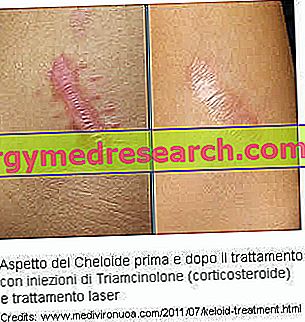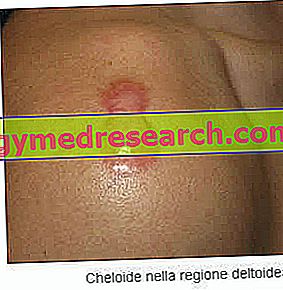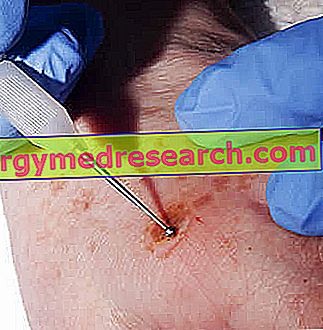Related articles: Tinea capitis Definition Tinea capitis is a fungal infection of the scalp. This condition is the consequence of an attack sustained by pathogenic fungi (dermatophytes) belonging to the genera Trichophyton and Microsporum , which parasitize the keratinized structures of the skin (thus the stratum corneum of the epidermis and the follicles pilieri)
Category skin health
Key concepts Infectious cellulite is a bacterial infection of connective tissue: it is an acute and severe inflammation of the dermis and subcutaneous layers. Infectious cellulitis: causes The causative agents most involved in infectious cellulitis are Streptococci and Staphylococci. Haemophilus influenzae can also cause similar infections, especially in children
Introduction Keloids are abnormal and abnormal scarring that forms on the skin due to trauma, abrasion, wounds, burns or piercing. What distinguishes them from the classic hypertrophic scars is the extension and irreversibility of the lesion: the keloids, in fact, grow in an exaggerated way starting from the wound, spreading even in the neighboring areas without regressing spontaneously
Definition of keloid Keloids are cicatricial lesions that grow beyond the border of a skin lesion: starting therefore from an abrasion or from a wound, the keloids develop a much wider and extended scar with respect to the damage of origin. Also called keloid scars , keloids represent the result of excessive and exaggerated growth of granulation tissue that originates at the edges of a wound
Generality Whoever has an impure skin always has the problem of how to remove blackheads from their face and body. Typical of oily skin and with imperfections, blackheads can represent a real blemish for people who suffer from it. It is, in fact, skin impurities with variable dimensions that generally appear on the face and / or body in areas particularly rich in sebaceous glands (such as nose, chin, forehead - the so-called "T zone" - and back)
What is seborrheic dermatitis? Seborrheic dermatitis is a fairly common condition, which mainly (but not only) affects the scalp; like all dermatitis, even the seborrheic one is characterized by inflammation of the affected area and redness, associated with an annoying sensation of itching. Sometimes, seborrheic dermatitis looks like rosacea; for this reason, often, the two conditions are confused or can occur simultaneously
Generality Facial dermatitis is a skin disorder that can cause many discomforts to people who suffer from it. In truth, there is no single form of dermatitis that can affect the face. In fact, there are several disorders of this type that can affect the skin of the face, each caused by different factors and each characterized by its own symptoms
Generality Diathermocoagulation - also known as electrocoagulation - is a particular technique, used in the dermatological field to remove small portions of epidermal tissue, in order to treat and resolve certain types of skin diseases and disorders. At the same time, diathermocoagulation can also be used in the gynecological field for the treatment of some sexually transmitted diseases
Definition of erysipelas "Erysipelas" is a term extracted from the medical language that identifies an acute infection of the skin, with evident involvement of the dermis, the superficial layers of the hypodermis and the lymphatic vessels: the erysipelas is generated by a bacterial infiltration responsible for progressive maceration of the skin, in turn favored by micro-lesions in the skin
Key points Necrotizing fasciitis is a serious, violent and sudden infection of soft tissues, with a predominantly bacterial etiology. Necrotizing fasciitis: causes The bacteria most involved in necrotizing fasciitis are: group A hemolytic streptococcus β, staphylococci (especially Staphylococcus aureus ), anaerobes belonging to the genus Clostridium, Vibrio parahaemolyticus , Vibrio vulnificus , Aeromonas hydrophila.
Definition of honeycomb Staphylococcus honeycomb or carbuncle (from the English word carbuncle) - not to be confused with anthrax - is a pyogenic infection of the skin, often involving a group of hair follicles; the infected material favors the formation of an accumulation of pus in depth, whose presence is perceived as a lump or a solid boil











